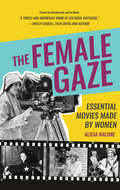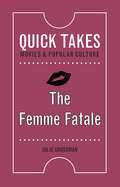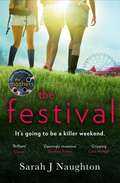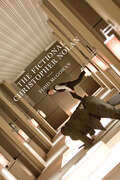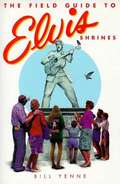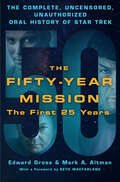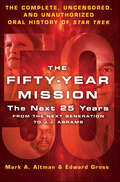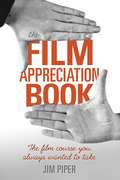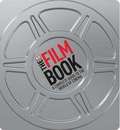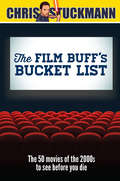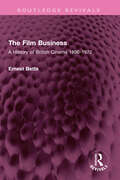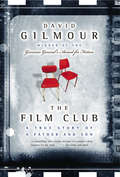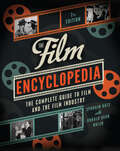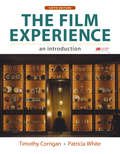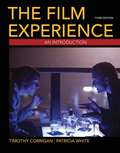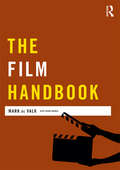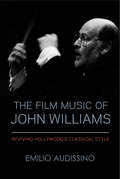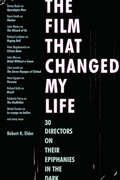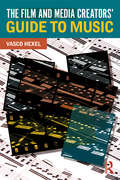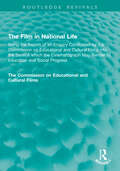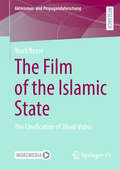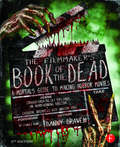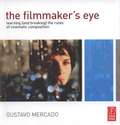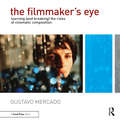- Table View
- List View
The Female Gaze: Essential Movies Made by Women
by Alicia Malone&“An unabashed love letter to our cinema sisters . . . a treasure of delights that honors more than a hundred years of female filmmaking. Brava!&” —Rachel Feldman, film/TV director, screenwriter and activistA #1 Bestseller in Movies & Video Guides & Reviews With the success of Patty Jenkins&’s Wonder Woman and the rise of the MeToo movement, women creators in film are more important than ever. Coined in the 1970s, the term &“male gaze,&” pertains to what happens to viewers when the majority of art and entertainment has been made by the one gender perspective. So, what about the opposite?The Female Gaze comprises a list detailing the essential movies from the past and present made by women. It also features multiple mini-essays written by a variety of diverse female film critics, about a woman or a movie made by women that they love. In its pages, you&’ll discover: The accomplishments of numerous women in film such as Dorothy Arzner, Ida Lupino, Kathryn Bigelow, Lady Bird&’s Greta Gerwig and moreThe lives of these women and the struggles they faced carving a place for themselves in the film industryHow these women&’s unique voices shaped the films they made and influenced all the film world &“Once again Alicia Malone champions women filmmakers, opening the floodgates to a great new wave of female voices and creative vision. A wonderful guide to some of the best films made by women, both celebrating women directors and fueling the red-hot discussion about why we don&’t have more.&” —Maria Giese, filmmaker and activist
The Femme Fatale: Ready For Her Close-up (Quick Takes: Movies and Popular Culture)
by Julie GrossmanOstensibly the villain, but also a model of female power, poise, and intelligence, the femme fatale embodies Hollywood’s contradictory attitudes toward ambitious women. But how has the figure of the femme fatale evolved over time, and to what extent have these changes reflected shifting cultural attitudes toward female independence and sexuality? This book offers readers a concise look at over a century of femmes fatales on both the silver screen and the TV screen. Starting with ethnically exoticized silent film vamps like Theda Bara and Pola Negri, it examines classic film noir femmes fatales like Barbara Stanwyck in Double Indemnity, as well as postmodern revisions of the archetype in films like Basic Instinct and Memento. Finally, it explores how contemporary film and television creators like Fleabag and Killing Eve’s Phoebe Waller-Bridge have appropriated the femme fatale in sympathetic and surprising ways. Analyzing not only the films themselves, but also studio press kits and reviews, The Femme Fatale considers how discourses about the pleasures and dangers of female performance are projected onto the figure of the femme fatale. Ultimately, it is a celebration of how “bad girl” roles have provided some of Hollywood’s most talented actresses opportunities to fully express their on-screen charisma.
The Festival
by Sarah J. NaughtonFROM THE NUMBER ONE BESTSELLING AUTHOR'Dazzlingly inventive'Sunday Times'Gripping and powerful'Cara Hunter**********FOUR WOMEN.Orly, Lenny, Mel and Thea have been best friends since school. But now it is 20 years later and inevitably they have drifted apart.ONE WEEKEND.It is Lenny's 40th birthday, plus Orly and Mel need cheering up, so Thea suggests a weekend away at a festival in their hometown. It's a chance for them all to reconnect. NOT ALL OF THEM WILL SURVIVE.But their holiday soon takes a sinister turn, and not all of the friends will leave the festival alive...
The Festival Cities of Edinburgh and Adelaide
by Sarah ThomassonThe Festival Cities of Edinburgh and Adelaide examines how these cities’ world-famous arts events have shaped and been shaped by their long-term interaction with their urban environments. While the Edinburgh International Festival and Adelaide Festival are long-established, prestigious events that champion artistic excellence, they are also accompanied by the two largest open-access fringe festivals in the world. It is this simultaneous staging of multiple events within Edinburgh’s Summer Festivals and Adelaide’s Mad March that generates the visibility and festive atmosphere popularly associated with both places. Drawing on perspectives from theatre studies and cultural geography, this book interrogates how the Festival City, as a place myth, has developed in the very different local contexts of Edinburgh and Adelaide, and how it is challenged by groups competing for the right to use and define public space. Each chapter examines a recent performative event in which festival debates and controversies spilled out beyond the festival space to activate the public sphere by intersecting with broader concerns and audiences. This book forges an interdisciplinary, comparative framework for festival studies to interrogate how festivals are embedded in the social and political fabric of cities and to assess the cultural impact of the festivalisation phenomenon.
The Fictional Christopher Nolan
by Todd McGowanThis analysis of the role of fiction in the films of Christopher Nolan is &“unassumingly brilliant and surgically incisive&” (Psychoanalysis, Culture, and Society). From Memento and Insomnia to the Batman films, The Prestige, and Inception, lies play a central role in every Christopher Nolan film. Characters in the films constantly find themselves deceived by others and are often caught up in a vast web of deceit that transcends any individual lies. The formal structure of a typical Nolan film deceives spectators about the events that occur and the motivations of the characters. While Nolan&’s films do not abandon the idea of truth altogether, they show us how truth must emerge out of the lie if it is not to lead us entirely astray.The Fictional Christopher Nolan discovers in Nolan&’s films an exploration of the role that fiction plays in leading to truth. Through close readings of all the films through Inception, Todd McGowan demonstrates that the fiction or the lie comes before the truth, and this priority forces us to reassess our ways of thinking about the nature of truth. Indeed, McGowan argues that Nolan&’s films reveal the ethical and political importance of creating fictions and even of lying. Nolan is the first filmmaker to devote himself entirely to the fictionality of the medium, and McGowan discloses how Nolan uses its tendency to deceive as the basis for a new kind of philosophical filmmaking, aligning Nolan&’s films with Hegel&’s philosophy. &“The most important work to date on Christopher Nolan. . . . [A] thrill to read.&” —Hugh S. Manon, Associate Professor and Director of Screen Studies, Clark University
The Field Guide to Elvis Shrines
by Bill YenneAny place that has a connection to Elvis can be found in this fascinating compendium, including Joni Mabe's Traveling Panoramic Encyclopedia of Everything Elvis, the El Vez Museum, and the world's largest painting of Elvis on black velvet.
The Fifty-Year Mission: The Complete, Uncensored, Unauthorized Oral History of Star Trek
by Edward Gross Mark A. AltmanThis is the unauthorized, uncensored and unbelievable true story behind the making of a pop culture phenomenon. The original Star Trek series debuted in 1966 and has spawned five TV series spin-offs and a dozen feature films, with an upcoming one from Paramount arriving in 2016. The Fifty-Year Mission is a no-holds-barred oral history of five decades of Star Trek, told by the people who were there. Hear from the hundreds of television and film executives, programmers, writers, creators and cast as they unveil the oftentimes shocking story of Star Trek's ongoing fifty-year mission -a mission that has spanned from the classic series to the animated show, the many attempts at a relaunch through the beloved feature films. Make no mistake, this isn't just a book for Star Trek fans. Here is a volume for all fans of pop culture and anyone interested in the nuts and bolts of a television touchstone.
The Fifty-Year Mission: The Next 25 Years
by Edward Gross Mark A. Altman“The oral history of the Star Trek franchise boldly continues” with inside stories and commentary from The Next Generation to the films of J.J. Abrams (Kirkus Reviews).This is the true story behind the making of a television legend. There have been many books written about Star Trek, but never with the unprecedented access, insight and candor of authors Mark A. Altman and Edward Gross. Having covered the franchise for over three decades, they’ve assembled the ultimate guide to a television classic.The Fifty-Year Mission: Volume Two is an incisive, no-holds-barred oral history telling the story of post-Original Series Star Trek, told exclusively by the people who were there, in their own words—sharing the inside scoop they’ve never told before—unveiling the oftentimes shocking true story of the history of Star Trek and chronicling the trials, tribulations—and tribbles—that have remained deeply buried secrets . . . until now.The Fifty-Year Mission: Volume Two includes the voices of hundreds television and film executives, programmers, writers, creators, and cast, who span from the beloved The Next Generation and subsequent films through its spin-offs: Deep Space Nine, Voyager, and Enterprise, as well J.J. Abrams’ reimagined film series.
The Film Appreciation Book: The Film Course You Always Wanted to Take
by Jim PiperThis is a book for cinephiles, pure and simple. Author and filmmaker, Jim Piper, shares his vast knowledge of film and analyzes the most striking components of the best movies ever made. From directing to cinematography, from editing and music to symbolism and plot development, The Film Appreciation Book covers hundreds of the greatest works in cinema, combining history, technical knowledge, and the art of enjoyment to explain why some movies have become the most treasured and entertaining works ever available to the public, and why these movies continue to amaze viewers after decades of notoriety.Read about such classic cinematic masterpieces as Citizen Kane, Gandhi, Midnight Cowboy, Easy Rider, True Grit, Gone With the Wind, and The Wizard of Oz, as well as more recent accomplishments in feature films, such as Requiem for a Dream, Munich, The King's Speech, and The Hurt Locker.Piper breaks down his analysis for you and points out aspects of production that movie-lovers (even the devoted ones) would never recognize on their own. This book will endlessly fascinate, and by the time you get to the last chapter, you're ready to start all over again. In-depth analysis and thoughtful and wide-ranging film choices from every period of cinema history will ensure that you never tire of this reading companion to film.
The Film Book
by Ronald BerganA comprehensive, fun-to-browse, and easy-to-use source of everything you want to know about the movies and the people behind them, The Film Book is a unique treasure trove of a guide that will appeal to anyone who loves movies. From the history of the art form to techniques, and then the films themselves, The Film Book provides an overview of cinematic styles and genres; the industry's greatest and most influential directors, and their key works; as well as looking at filmmaking around the world, from Hollywood to Bollywood.
The Film Buff's Bucket List: The 50 Movies of the 2000s to See Before You Die
by Chris StuckmannFrom the star YouTube reviewer, “a fantastic selection of movies, both big and small, that all film lovers can enjoy . . . a wonderful reference guide” (Alicia Malone, author Backwards and in Heels).Comic book heroes, ice princesses, apocalyptic lovestruck teens, whatever masterpiece Pixar is rolling out—not to mention countless indies and foreign films—there’s been no shortage of things to watch in recent years. But which films are the best of the best? What are the top twenty-first century movies to see before you die?Chris Stuckmann, one of YouTube’s most popular film reviewers with over 125 million views, gives us his best of the best in this list of the fifty very best movies since 2000—with all the style and punch his YouTube fans have come to love.“Chris Stuckmann is the Roger Ebert of Youtube and this book is awesome.” —Varla Ventura, author of Sheroes
The Film Business: A History of British Cinema 1896-1972 (Routledge Revivals)
by Ernest BettsFirst published in 1973 The Film Business makes a factual survey of British films from their beginnings in 1896 to 1972. Ernest Betts offers character studies of men who have built the film industry and made it what it is. He examines the financial and political background and shows how, while intending to encourage film production, it has often had exactly the opposite effect and inhibited its free development. Betts also attacks the manner in which the American film industry has taken over the British film industry and points to the failure of successive governments to save it from repeated crises and losses. Through these fluctuations the author keeps a firm eye on the film itself and brings the judgement of film critics past and present to bear on British cinema, as it moves uncertainly and not without its triumphs into the 1970s. This is an interesting read for students and scholars of film studies, British film history and British cinema.
The Film Club: A True Story of a Father and a Son
by David GilmourFrom the 2005 winner of the Governor-General’s Award for Fiction and the former national film critic for CBC television comes a delightful and absorbing book about the agonies and joys of home-schooling a beloved son. Written in the spare elegant style he is known for, The Film Club is the true story about David Gilmour’s decision to let his 15-year-old son drop out of high school on the condition that the boy agrees to watch three films a week with him. The book examines how those pivotal years changed both their lives. From French New Wave, Kurosawa, and New German cinema, to De Palma, film noir, Cronenberg and Billy Wilder, among many others from world cinema, we read about key moments in each film, as the author teaches his son about life and the vagaries of growing up through the power of the movies. Replete with page-turning descriptions of scenes and actors and directors, the narrative is framed with the tender story of his son’s first bittersweet first loves. This is a charming and poignant story about a very special time in a father and son’s relationship. David Gilmour is a novelist who has earned critical praise from literary figures as diverse as William Burroughs and Northrop Frye, and from publications as different as the New York Times to People magazine. The author of six novels, he also hosted the award-winning Gilmour on the Arts. He lives in Toronto with his wife Tina Gladstone.
The Film Encyclopedia: The Complete Guide to Film and the Film Industry
by Ephraim Katz Ronald Dean NolenEphraim Katz's The Film Encyclopedia is the most comprehensive single-volume encyclopedia on film and is considered the undisputed bible of the film industry. Completely revised and updated, this seventh edition features more than 7,500 A–Z entries on the artistic, technical, and commercial aspects of moviemaking, including: Directors, producers, actors, screenwriters, and cinematographers; Styles, genres, and schools of filmmaking; Motion picture studios and film centers; Film-related organizations and events; Industry jargon and technical terms; Inventions, inventors, and equipment; Plus comprehensive listings of academy award–winning films And artists, top-grossing films, and much more!
The Film Experience: An Introduction
by Patricia White Timothy CorriganNow with Macmillan's highly touted LaunchPad to deliver superior content online, The Film Experience offers a comprehensive introduction to the art, language, industry, culture, and experience of the movies?�with new digital tools to bring that experience to life and help students master course material. The text highlights how formal elements like cinematography, editing, and sound can be analyzed and interpreted within the context of a film as a whole. With superior tools for reading and writing about film, as well as unparalleled coverage of diversity, inclusion, and non-mainstream filmmaking traditions, The most robust introduction to film on the market, the Sixth Edition emphasizes film technology through expanded coverage of animation and a new Technology in Action feature, which puts the evolving technology of film in historical context. The Film Experience is also now available with LaunchPad, Macmillan�s customizable online course space, which includes the full e-book, LearningCurve adaptive quizzing, a rich array of video activities aligned with the text, and more.
The Film Experience: An Introduction (Third Edition)
by Patricia White Timothy CorriganThe Film Experience is a comprehensive introduction to film that recognizes students as movie fans while surpassing all other texts in helping them understand the art form's full scope. Noted scholars and teachers Tim Corrigan and Patricia White capture the complete film experience, situating their strong coverage of the medium's formal elements within the larger cultural contexts that inform the ways we all watch film--from economics and exhibition to marketing and the star system. A host of learning tools gives students the support they need to make the transition from movie fan to critical viewer. Now with a sharper focus that highlights the essential formal and cultural concepts of cinema, and a powerful new suite of video and media, The Film Experience is the consummate introductory film text.
The Film Handbook (Media Practice)
by Mark De Valk Sarah ArnoldThe Film Handbook examines the current state of filmmaking and how film language, technique and aesthetics are being utilised for today’s ‘digital film’ productions. It reflects on how critical analysis’ of film underpins practice and story, and how developing an autonomous ‘vision’ will best aid student creativity. The Film Handbook offers practical guidance on a range of traditional and independent ‘guerrilla’ film production methods, from developing script ideas and the logistics of planning the shoot to cinematography, sound and directing practices. Film professionals share advice of their creative and practical experiences shooting both on digital and film forms. The Film Handbook relates theory to the filmmaking process and includes: • documentary, narrative and experimental forms, including deliberations on ‘reading the screen’, genre, mise-en-scène, montage, and sound design • new technologies of film production and independent distribution, digital and multi-film formats utilised for indie filmmakers and professional dramas, sound design and music • the short film form, theories of transgressive and independent ‘guerrilla’ filmmaking, the avant-garde and experimental as a means of creative expression • preparing to work in the film industry, development of specialisms as director, producer, cinematographer, editor, and the presentation of creative work.
The Film Music of John Williams: Reviving Hollywood's Classical Style (Wisconsin Film Studies)
by Emilio AudissinoFrom the triumphant “Main Title” in Star Wars to the ominous bass line of Jaws, John Williams has penned some of the most unforgettable film scores—while netting more than fifty Academy Award nominations. This updated and revised edition of Emilio Audissino’s groundbreaking volume takes stock of Williams’s creative process and achievements in music composition, including the most recent sequels in the film franchises that made him famous. Audissino discusses Williams’s unique approach to writing by examining his neoclassical style in context, demonstrating how he revived and revised classical Hollywood music. This volume details Williams’s lasting impact on the industry and cements his legacy as one of the most important composers in movie history. A must for fans and film-music lovers alike.
The Film That Changed My Life: 30 Directors on Their Epiphanies in the Dark
by Robert K. ElderSpanning several generations--from newcomers to Oscar Award-winning veterans--this volume features a discussion of the movies that shaped the careers of these filmmakers and, in turn, cinema history. Here directors, including Peter Bogdanovich, Kimberly Peirce, Arthur Hiller, and John Waters, explore the film they saw at an especially formative moment, how it influenced their own work--or, in some cases, led them to tell stories through movies themselves--and the effects it had on their thoughts about cinema. Revealing stories include how after watching Rebel Without a Cause, John Woo started combing his hair like James Dean and even began talking like him; Apocalypse Now inspired Danny Boyle to take risks and make larger-than-life films; and a line in The Wizard of Oz--"Who could ever have thought a good little girl like you could destroy all my beautiful wickedness?"--has become almost a personal mantra or prayer for John Waters.
The Film and Media Creators' Guide to Music
by Vasco HexelMusic plays an integral role in the experience of film, television, video games, and other media—yet for many directors, producers, and media creators, working with music can be a baffling and intimidating process. The Film and Media Creators’ Guide to Music bridges the gap between musical professionals and the creators of film and other media projects, establishing a shared language while demystifying this collaborative journey. Organized with a modular chapter structure, the book covers fundamental topics including: Why (and when) to use music in a project How to talk about music Licensing existing music Commissioning original music Working with a composer Geared toward emerging and established creators alike, this book takes a practical approach to the process of finding the best music for all forms of moving image. The Film and Media Creators’ Guide to Music offers hands-on advice for media creators, providing readers with the confidence to approach the planning, commissioning, creation, and placement of music in their projects with the awareness, understanding, and vocabulary that will enable them to be better collaborators and empowered storytellers. For students and professionals working across film and media, this book is the essential guide to using music creatively and effectively.
The Film in National Life: Being the Report of an Enquiry Conducted by the Commission on Educational and Cultural Films into the Service which the Cinematograph May Render to Education and Social Progress (Routledge Revivals)
by The Commission on Educational and Cultural FilmsThe Film in National Life (1932) is the report by the Commission on Educational and Cultural Films, established in 1929, that aimed to establish a position on the treatment of film constructively in the interests of education in its widest sense. The Commission was aware that other countries were taking the film seriously as an instrument of visual and aural instruction, as a means of entertainment, and as an art form, and sought to adopt a similar rational approach in the UK.
The Film of the Islamic State: The Cinefication of Jihadi Video (Aktivismus- und Propagandaforschung)
by Yorck BeeseThe film of the so-called Islamic State is part of the still relatively opaque history of radical Sunni Islamist video propaganda, a field in which it is simultaneously its strongest exponent. Through its imports of aesthetics in the age of digitalization and the concurrent de-professionalization of film, this violent propaganda film has interestingly drawn attention for its seeming likeness to Hollywood film, an odd comparison that the Islamic State itself opposes through its own filmic antagonisms to commercial cinema. In an intermittent attempt at attacking cinematic illusionism, it has made increasing use of cinematic devices in order to communicate its violent and anti-humanist ideology – and has thereby entered a state of filmic self-contradiction. This book analyzes and uncovers the mechanisms and dynamics of ideological communication in the Islamic State’s videos through a combined historical and neoformalist approach, making them predictable for future researchers.
The Filmmaker's Book of the Dead: A Mortal’s Guide to Making Horror Movies
by Danny DravenProduce, direct, promote and sell your own chilling horror film with real-world advice from award-winning producer/director/writer Danny Draven! The second edition is completely updated with information on new technology, new exclusive interviews with industry pros, new photos and samples from the production of recent horror movies, new behind-the-scenes video, information on modern distribution methods and delivery and more! From the history of horror and the technique of the scare to pre-production and distribution, this complete, full-color guide to filmmaking uncovers all the insider secrets for creating your own spine-tingling horror film from start to finish. The 2nd Edition features all NEW interviews from industry professionals such as: Mick Garris (Sleepwalkers, Bag of Bones, Desperation, The Stand) John Ottman (Composer/Editor of X:Men: Days of Future Past, The Usual Suspects) Mark Ordesky & Jane Fleming (Producers of Lovely Molly, Exists) Kane Hodder (Jason from the Friday the 13th, part 7 to 10, Hatchet) Tibor Takacs (Director of The Gate, Spiders 3D, Megasnake) John Debney (Composer of Predators, Sin City, End of Days) Jojo Draven (Composer of Ghost Month, Reel Evil) Michael Berryman (The Hills Have Eyes, Weird Science) Mike Mendez (Director of The Gravedancers, Big Ass Spider!) Neal Marshall Stevens (Screenwriter of Thir13en Ghosts, Hellraiser: Deader) Chris Alexander (Editor in Chief of Fangoria Magazine) Jessica Cameron (Actress/Director of Truth or Dare) Denise Gossett (Founder of Shriekfest Film Festival) A newly updated companion website that features: *Behind the scenes videos for films films such as Puppet Master, Blood Dolls, Trancers, Subspecies, Reel Evil, Ghost Month and more! *A revised collection of horror movie trailers! * Sample scripts, schedules, storyboards, agreements and more! Other featured interviews include: James Wan (Saw, Insidious, The Conjuring) Robert Englund (Freddy from Nightmare on Elm Street) Robert Kurtzman (From Dusk Til Dawn) Stuart Gordon (Re-Animator, From Beyond, Dagon) Tom Savini (Night of the Living Dead) Lloyd Kaufman (Toxic Avenger) Charles Band (Parasite, Metalstorm, Ghoulies) John D. LeMay (Friday the 13th: The Series) David DeCoteau (Puppet Master 3, Sorority Babes in the Slimball Bowl-O-Rama) Debbie Rochon (Tromeo & Juliet) Reggie Bannister (Phantasm) Sam McCurdy (Director of Photography of Dog Soldiers, The Decent, The Hills Have Eyes 2) Nathan Barr (Composer of Hostel,True Blood, Hemlock Grove) Jim Dooley (Composer of When A Stranger Calls) Chuck Williams (Bubba Ho-Tep) Herschell Gordon Lewis (Blood Feast, Wizard of Gore) H.P. Lovecraft’s Notes on Writing Weird Fiction And many more...
The Filmmaker's Eye: Learning (and Breaking) the Rules of Cinematic Composition
by Gustavo MercadoThis book combines conceptual and practical instruction on creating polished and eloquent images for film and video with the technical know-how to achieve them. The Filmmaker's Eye is a focused, easy-to-reference guide that shows you how to become a strong visual storyteller through smart, effective choices for your shots.
The Filmmaker's Eye: Learning (and Breaking) the Rules of Cinematic Composition
by Gustavo MercadoThis is the only book that combines conceptual and practical instruction on creating polished and eloquent images for film and video with the technical know-how to achieve them.Loaded with hundreds of full-color examples, The Filmmaker's Eye is a focused, easy-to-reference guide that shows you how to become a strong visual storyteller through smart, effective choices for your shots. This book has struck a chord worldwide and is being translated into several languagesAfter a short introduction to basic principles, a variety of shots are deconstructed in the following format:- Why It Works: an introduction to a particular type of shot- How It Works: callouts point out exactly how the shot works the way it does--the visual rules and technical aspects in action- Technical Considerations: the equipment and techniques needed to get the shot.- Breaking the Rules: examples where the "rules" are brilliant subverted
